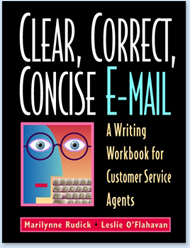Humorist Gene Weingarten had a great piece in last Sunday’s Washington Post magazine. In “What the [Blank]?” he tells about how, for about 10 days in January, the State Department’s principal electronic communications system was seriously disabled by “an internal logjam of peevish e-mails.” Weingarten explains:
“It happened after thousands of U.S. diplomatic officials stationed around the globe were sent the same blank piece of spam. Instead of ignoring it or erasing it, many tapped out indignant requests not to be so bothered, and then hit ‘reply all.’ That proved to be a problem: Mathematically, when each of 1,000 people responds to 1,000 people each, the numbers build exponentially (particularly after the new recipients start testily lecturing the senders on the inadvisability of responding via ‘reply all,’ and doing it via ‘reply all’).”
Ah, yes – the kneejerk, productivity-killing “reply all” e-mail. We resent people who cram our inboxes with thoughtlessly sent reply-alls like “Thanx” or “Sounds fine.” But do kneejerk reply-alls deserve a kneejerk corporate response? In a draconian measure, Nielsen announced to employees that beginning January 29th the Reply to All function in Microsoft Outlook would be disabled. (No, I am not making this up. The Nielsen memo was published on January 27th in Dylan Stableford’s Folio blog.) In the memo, Nielsen CIO Andrew Cawood wrote:
“We have noticed that the ‘Reply to All’ functionality results in
unnecessary inbox clutter. Beginning Thursday we will eliminate this
function, allowing you to reply only to the sender. Responders who want
to copy all can do so by selecting the names or using a distribution
list.”
Should we alter software to prevent users from making poor communication choices? No! Instead, we should use common sense and avoid sending “reply alls.” Here’s why:
- When you send everyone an e-mail that only some should read, you increase the risk that confidential or proprietary info will slip out.
- When you waste people’s time by sending them e-mails they don’t care about, you erode their trust in you as an e-mailer. Remember the boy? The wolf?
- Your “reply all” e-mail confuses people and spurs them to send you more e-mail. For example, you e-mail 10 people asking them to send you their travel itineraries. Seven people respond. If you send a “reply all” reminder to all 10 people instead of just the 3 who didn’t send their itineraries, you’re likely to get 7 e-mails saying “Didn’t you get my itinerary?? I sent it…” and you’ll have to reply to 7 unnecessary e-mails.
— Leslie O’Flahavan
Tags: E-mail






0 Comments